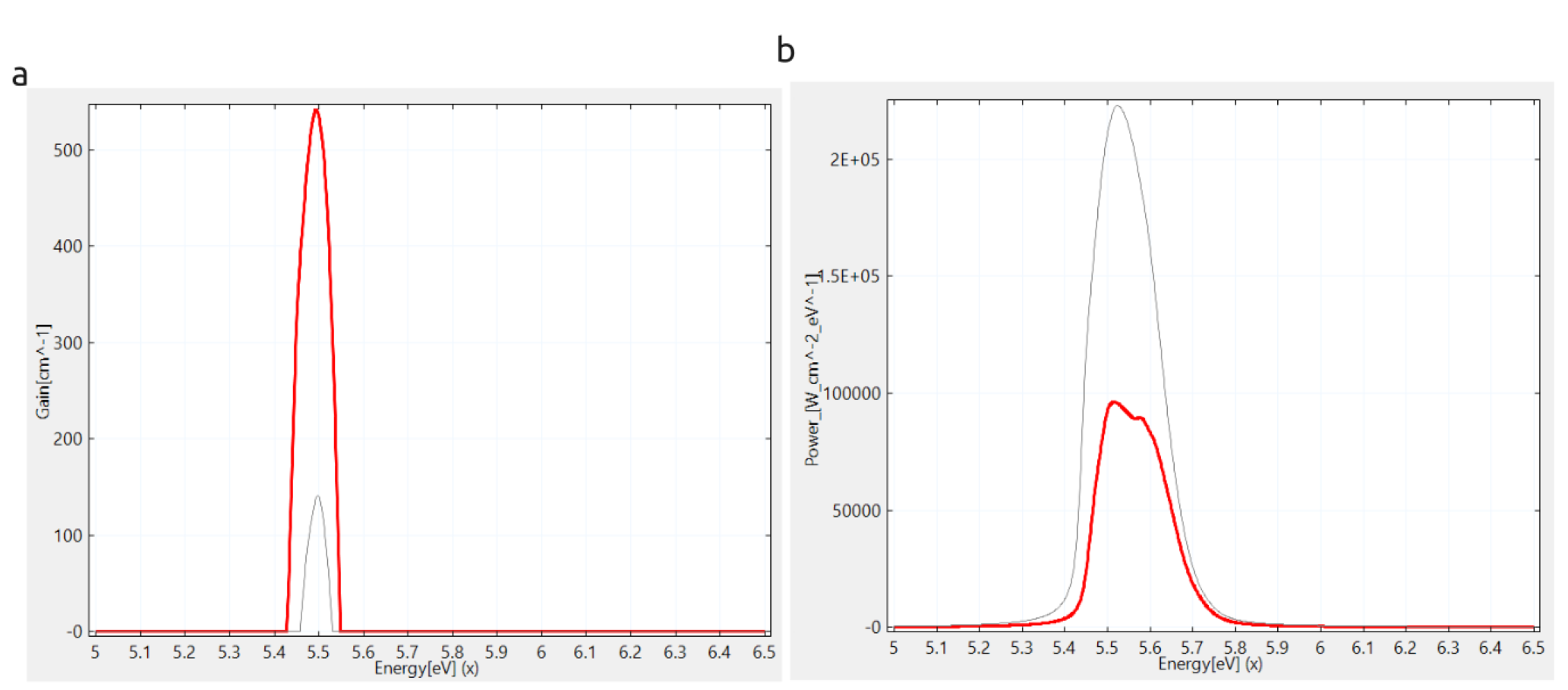5.4.2. AlGaN/AlN UVC-LED with distributed-polarization layer
Added in version 2.4.12.
- Files for the tutorial located in nextnano++\examples
UVC-LED_wz_III-N_1D.nnp
This is an exemplary simulation of a nitride UVC LED with emission peak at around 5.5 eV. The active region contains 3 quantum wells (QWs). The last QW is followed by an extra barrier, electron blocking layer (EBL), and graded layer improving hole injection. The design follows concepts published in [MehnkeAPE2019] with the super-lattice hole injection layer replaced by a layer with distributed polarization charges (often confusingly referred to as polarization doping) and is not optimized.
All Schrödinger, Poisson, and drift-diffusion equations are solved self-consistently in this simulation. The Schrödinger equation is solved twice and only within the active region. First, it is solved using 1-band effective-mass models for self-consistent algorithm with the other equations. At the end, it is solved once again using 8-band \(\mathbf{k} \cdot \mathbf{p}\) method for calculation of optical spectra. Note, that certain number of grid points on each side of the quantum region is ignored for density calculation, to remove artifacts resulting from the choice of the boundary conditions for the Schrödinger equation and to improve overall convergence of the simulation.
Attention
The simulation uses the default database parameters. Please review them before applying this simulation to your research.

Figure 5.4.2.1 TEMPORARY FIGURE: (a) Energy profile around the active region of the LED, (b) Recombination rates in teh active region, (c) Energy-resolved electron and hole densities within the active region.

Figure 5.4.2.2 TEMPORARY FIGURE: TE and TM spectra of (a) optical material gain and (b) spontaneous emission power.
Last update: 2025-11-03